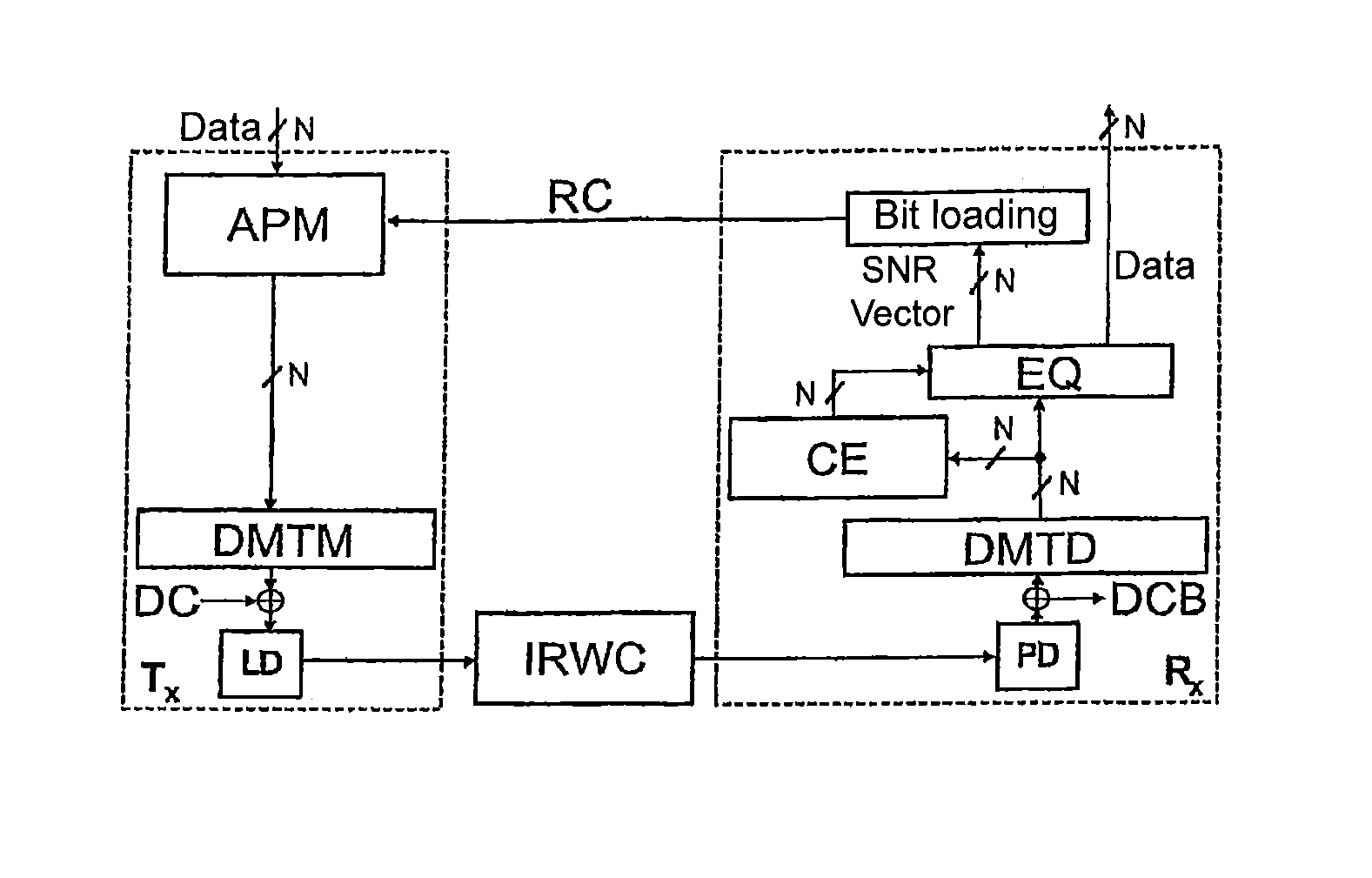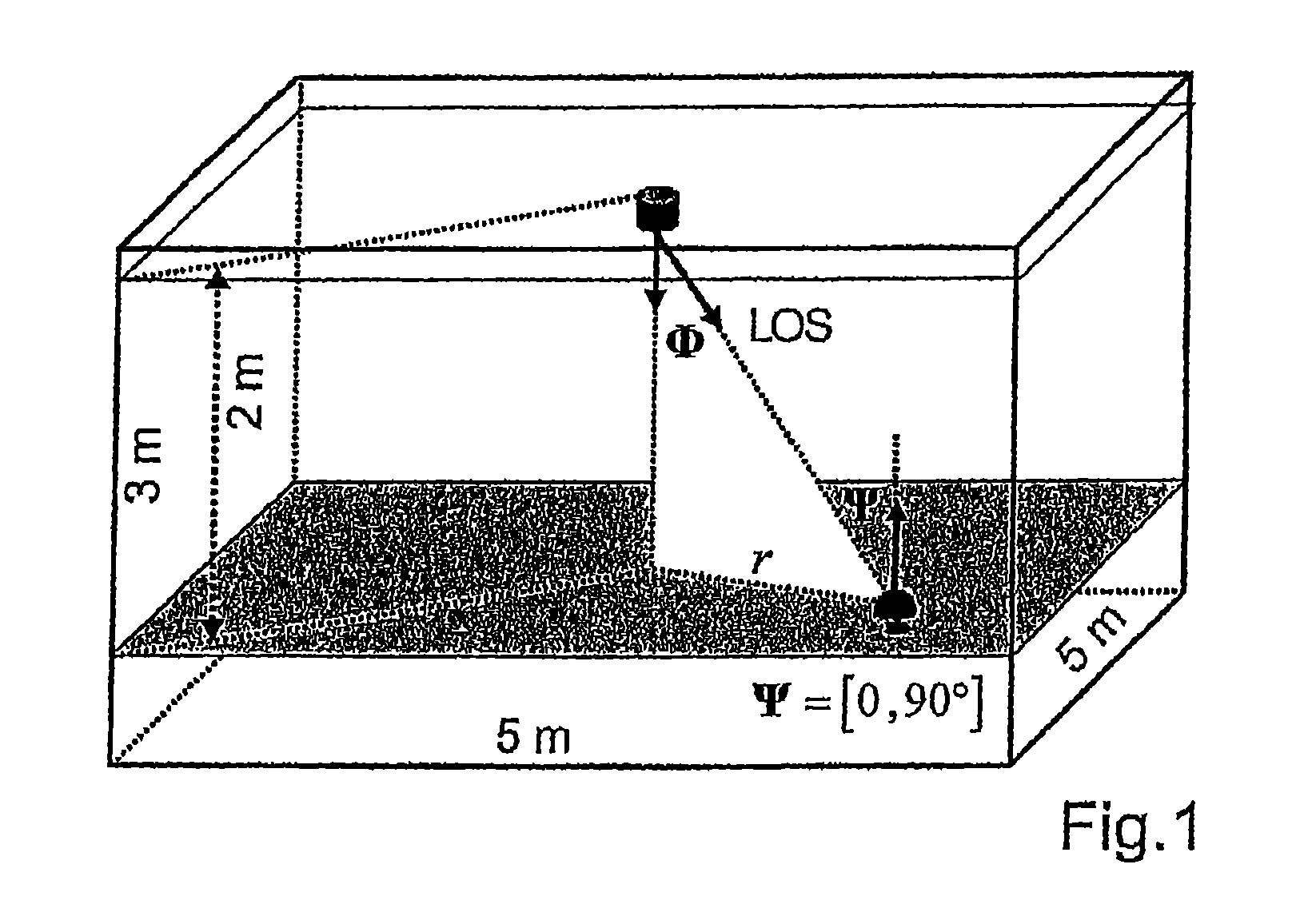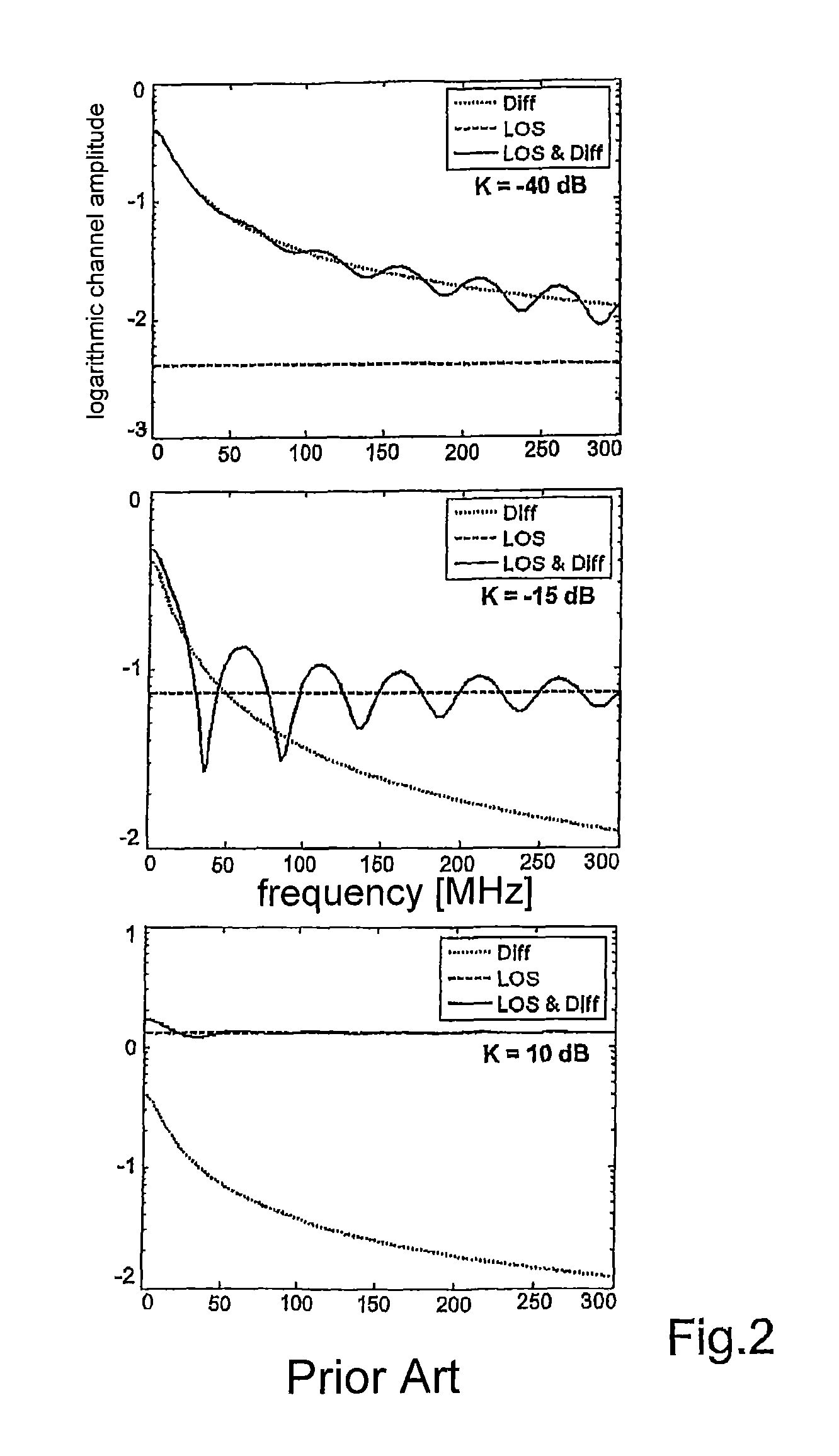Dynamic data-rate adaptive signal processing method in a wireless infra-red data transfer system
a data transfer system and data rate technology, applied in the field of dynamic data rate adaptive signal processing, can solve the problems of large time and effort invested in equipment, unsatisfactory utilization of available channel capacity, and large vulnerability of broad baseband transfer to inter-symbolic interference, etc., to achieve high data rate, data rate reduction, and transfer capacity
- Summary
- Abstract
- Description
- Claims
- Application Information
AI Technical Summary
Benefits of technology
Problems solved by technology
Method used
Image
Examples
Embodiment Construction
[0033]A typical application of a wireless infra-red transfer system is depicted in FIG. 1 in the form of a small office. The transmitter Tx is arranged in the centre of the ceiling, the receiver Rx may be arranged as desired, e.g. on a desk and may have any orientation complying with the line of sight LOS to the transmitter Tx. Such an arrangement comprising an undirected transfer channel advantageously allows for a diffuse as well as for a direct communication connection between the transmitter Tx and the receiver Rx. If a direct connection exists between them, the line of sight may be used for communication. If the direct connection is interrupted, the diffuse connection may maintain the communication at a reduced data rate.
[0034]The transfer function of the infra-red channel in such an undirected line of sight results in:
H(f)=ηLOS+Hdiff(f) (1)
whereby ηLOS=portion of the line of sight with regard to the path amplitude attenuation which is as a rule independent from the modulation...
PUM
 Login to View More
Login to View More Abstract
Description
Claims
Application Information
 Login to View More
Login to View More - R&D
- Intellectual Property
- Life Sciences
- Materials
- Tech Scout
- Unparalleled Data Quality
- Higher Quality Content
- 60% Fewer Hallucinations
Browse by: Latest US Patents, China's latest patents, Technical Efficacy Thesaurus, Application Domain, Technology Topic, Popular Technical Reports.
© 2025 PatSnap. All rights reserved.Legal|Privacy policy|Modern Slavery Act Transparency Statement|Sitemap|About US| Contact US: help@patsnap.com



